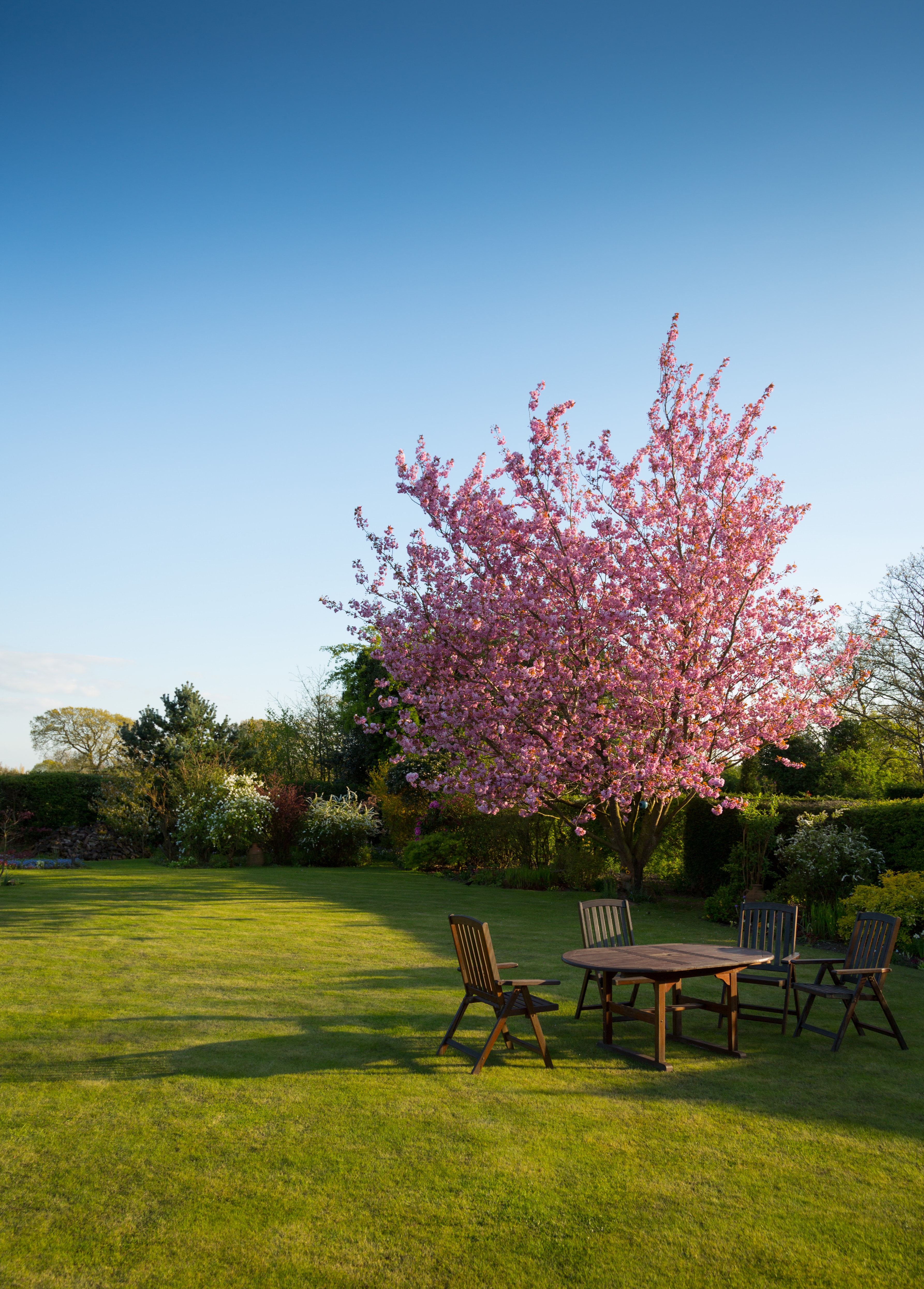Shady Lawn Care: Caring for a lawn where the sun doesn’t shine
Living in a neighborhood with lots of trees and foliage can be great, but one downside may be that your lawn doesn’t receive ideal amounts of sunlight. Homeowners across the state want to know: how do I get grass to grow in shady areas? The answer depends on a few different factors.
Amount of Sunlight
Different grasses require different amounts of sunlight to grow. Unfortunately, if the area you’re struggling with doesn’t get ANY sunlight you’re out of luck. Even the most shade-friendly grasses require at least a few hours of sunlight every day.
If you are really serious about growing grass in the area, check with an arborist to see if the trees in the area could have limbs removed to provide more light.
If more light can’t be brought in, there are a few options:
Consider a rock or mulch bed for the area if it’s small. This can enhance the aesthetic and once it’s done, will require little future maintenance at all.
If you still desire green, there are certain shrubs or ground cover plants that tolerate moderate shade. Be careful though, since ground cover plants have tendencies to grow out of their shady areas and into your lawn.
There Is Hope
If the area does get at least 4 hours of sunlight, there are steps you can take to help the grass grow.
First, look at the soil around the affected grass. Is it compacted? Core aeration will loosen it up. Is it always moist? In a low spot? If there is too much moisture, you may be able to install a French drain to carry some of it away. Is it clayey near the surface? Add an inch of compost over the area to give room for seedlings to establish some roots.
All these things are great to check on and remedy as fall approaches, which is also the best time to seed the area for the following year.
Seed
Your best bet for establishing grass in the area is to use a fine fescue grass seed. Late August through September is the best time to seed. If you can, core aerate the area, seed, and rake over the seed to ensure it gets good contact with the soil.
Water frequently to keep the ground moist (but not oversaturated or with standing water), and once seedlings come up, water less frequently. The next season, water the area as little as possible and when you do, water deeply.
Maintenance
Once seedlings have sprouted, the most important thing is maintenance. Use much less fertilizer in the area than the rest of your lawn, about half as much, if any at all. Mow higher in the shade, to about 3 or more inches, to cause less stress on the grass. Also, reduce foot traffic in the area.
This includes dogs. Dogs can be tough on any lawn depending on the size of the dog and area of the lawn. Shady areas especially do not tolerate stress from the running of dogs and their “nitrogen-rich fertilizer deposits”. If you can limit your dog from accessing the area, this will give your grass the best chance of growing.

